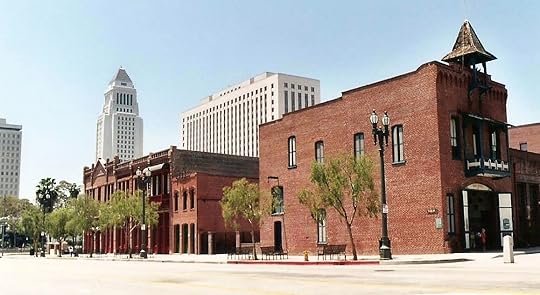Solved! Buster Keaton’s Mystery Colegrove Building


Buster Keaton was a pragmatic filmmaker, and it’s been fun discovering how often he would shoot simple scenes nearby, or even across the street from his small Hollywood studio once standing at 1025 Lillian Way. Appearing as both a receiving hospital that tosses him out the front door in The Goat (1921) (above left), and then as a justice of the peace office where Buster confuses potential brides in The Play House (1921), this unique recessed entrance-way and partial staircase had puzzled me for years. Knowing Buster’s working habits, I had long wondered if this curious doorway was the side entrance to some random Metro Studio building adjacent to Keaton’s studio. I scrutinized every Metro Studio photo I could find, but the doorway just never showed up.

Looking NW – Metro Studio at left, Keaton at right – no sign of matching doorway – HollywoodPhotographs.com
But as often happens, the answer to one silent film mystery was found within another.
During this scene above from the 1919 Billie Rhodes comedy A Two-Cylinder Courtship, a top-hat-wearing fake preacher (hired by Dad to halt the marriage) leads an eloping couple upstairs beside The Colegrove Restaurant once standing at 1105 N. Vine Street, one block north and east from the Keaton Studio. Colegrove was once a tiny agricultural community centered around Santa Monica Blvd. and Gower, south of Hollywood, itself once a tiny agricultural community. The Colegrove Lemon Exchange (later Cahuenga Valley Lemon Exchange), stood directly north of Keaton’s studio, and glimpses of it appear during The Scarecrow and The Goat.



The identical two-inch high step spanning the threshold, matching stairway post, and even matching doormat from The Goat (left), A Two-Cylinder Courtship, and The Play House, confirm these are all the same stairs leading to Henrietta Covarrubias’ upper floor boarding house at 1103 Vine Street. Further, Colegrove had very few other candidate buildings at the time, and this setting stood just a block from Buster’s studio. But is there more direct proof?

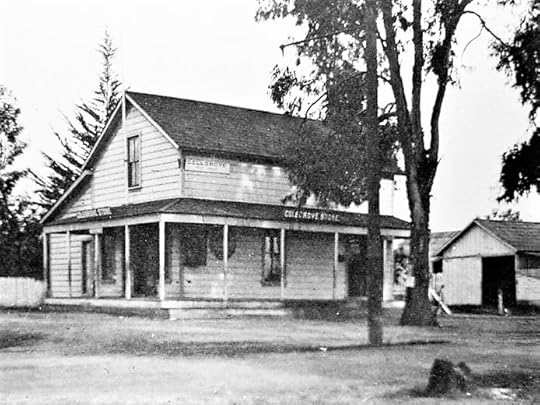
Well, after locking the couple in his room, the fake preacher then welcomes Dad and explains how he foiled the sneaky couple’s elopement. This scene was filmed looking east from the NW corner of Santa Monica and Vine towards the original Colegrove Post Office still standing at the time across the street. USC Digital Library.
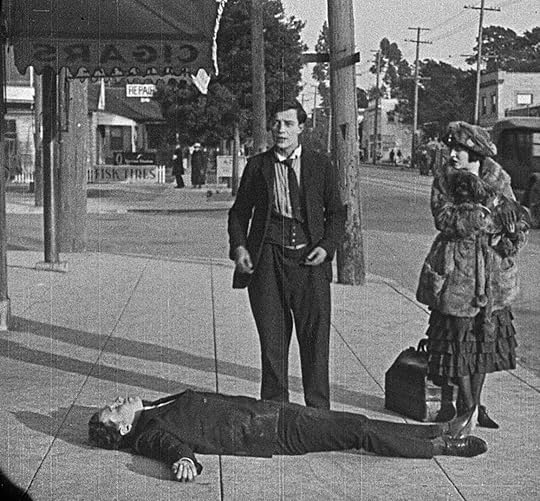

Next, already confirmed HERE as the NW corner of Santa Monica and Vine, look at this detail from The Goat, after Buster has vanquished a bully harassing Virginia Fox. At back stands a corner steel post supporting the upper floor. This same corner steel post also appears during A Two-Cylinder Courtship.


Finally, this brief shot of Buster’s horse from Cops (left) reveals Stafford Melanthial’s billiard parlor at 6303 Santa Monica Blvd., just west from the corner of Vine, showing the very same “Pocket Billiards” signs appearing in A Two-Cylinder Courtship. Clearly these various scenes were all filmed along the east and south sides of the same two-story building once standing at the NW corner of Santa Monica and Vine.
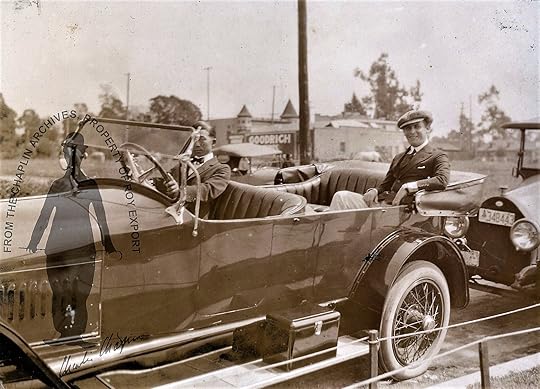
Looking NE at Lew Cody posed in front of the Chaplin Mutual Studio, later to become the Keaton Studio, looking towards the two towers of the Colegrove Mystery Building at back, the taller tower at the corner of Santa Monica and Vine, blocked from view by Marshall’s Garage (Goodrich Tires) – Charlie Chaplin Archives


The NW corner of Santa Monica and Vine stood one block north and east from the Keaton Studio on Eleanor. The smaller west tower of the Colegrove Mystery Building appears at left in this production photo from Keaton’s The Scarecrow (1920), blocked by Marshall’s Garage, the red garage building on the map. Buster built this set on what was then a vacant lot kitty-corner from his studio.
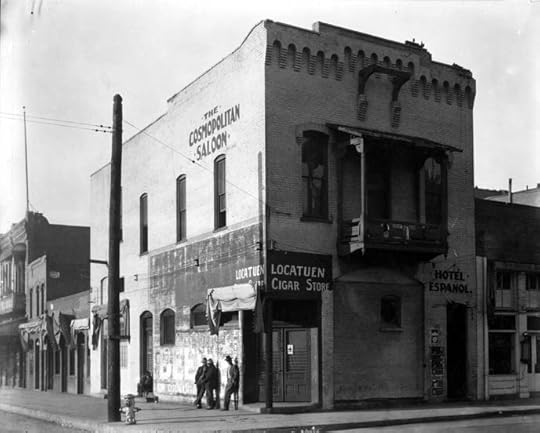


In closing, A Two-Cylinder Courtship was included as a bonus film to the evocative comedy-drama Dinty (1920), released on Blu-ray by Grapevine Video, depicting a spunky newsboy struggling to care for his ailing mother played by Colleen Moore. Dinty portrays dozens of fascinating scenes filmed near the Plaza de Los Angeles downtown, depicting small byways and alleys rarely documented in archival photos. I hope to post about Dinty’s amazing Plaza history someday. Above, a 1920 view of the Plaza Firehouse built in 1884 facing the Plaza (then the Cosmopolitan Saloon) and still standing, with matching views, upper right, from Dinty, and lower right, from the 1916 Dorothy Gish immigrant drama Gretchen the Greenhorn.
Above, the Plaza Firehouse today (the station appears during another scene from The Goat, read more HERE), and below, a gas station fills the NW Santa Monica and Vine corner site today.


